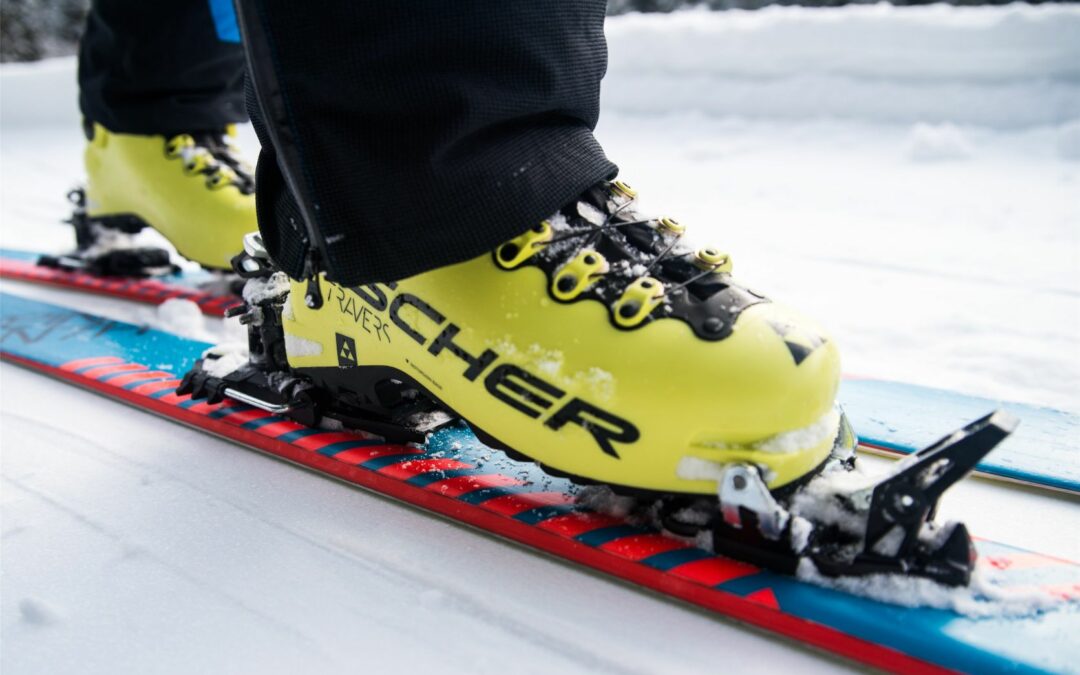Fischer had a long and illustrious history as a ski maker before they decided to jump into the boot pool, despite said pool already being awash with brands. The focus of their debut models was an abducted (toes-out) stance, a clever idea it slightly overcooked, leaving some test pilots feeling like they were traveling in a downhill herringbone.
Undeterred by the difficulties of getting traction in an over-served market, Fischer pressed on, tinkering with their stance and story until several years ago they went all-in on a fancy new system for custom molding the shell, Vacuum Fit. Vacuum technology had been part of Fischer’s manufacturing expertise for many years, so transferring this concept to ski boots may have been an easier step for Fischer to imagine than for other, tradition-bound brands.
Vacuum Fit was such a hit with specialty shops it enabled Fischer to steal the limelight from industry leader Salomon, even though Salomon was first to market with a shell-molding technology of their own called Custom Fit. The big deal about Vacuum Fit was that it didn’t just expand the shell (although it could); it could also bring it closer to the forefoot. Even the one-in-a-thousand shops with a history of boiling boots to modify them never had the means of reducing shell volume all around the forefoot like Vacuum Fit.
Like many first-of-their-kind innovations, Vacuum Fit didn’t get everything right immediately. The biggest limitation was it didn’t have much effect on the critical rear foot, but a second-generation Vacuum station corrected this oversight. Today, the Fischer Vacuum is a Full Fit process, and still the only heat molding technology that facilitates reducing shell volume.
Two years ago, Fischer augmented its point-of-sale technology with a podium that takes a 3D scan of the foot and lower leg, the better to match the skier to the optimal Fischer boot model. A similar scanning technology is also available in a smartphone app so skiers can scan themselves.
With the arrival of a worldwide pandemic, the ability to read a skier’s foot and ankle area in precise detail without the bootfitter touching the customer has become an attractive selling point. Even if only a few shops adopt the Fischer Scan-Fit system, the exponential expansion of Fischer’s data collection points will increase the accuracy of its lasts, a significant contribution to their boot R&D efforts.
After a season of relatively little model turnover, last year was a banner year for new boot models chez Fischer. RC4 Podium GT introduced a new series of race clones that slips into the Fischer line just below its trio of real-deal (92mm last) RC4 Podium monoblock race boots. The narrow-lasted (96mm +/- 3mm) Podium GT series includes Vacuum Full Fit shells and lace-up liners in a 3-model series at 140, 130 and 110 flex indices.
The new flagship of Fischer’s non-race collection is the RC4 The Curv GT, with a sleek new chassis built on a 96mm last. Much lighter (1840g) than a Podium race boot, The Curv GT is the first boot to take advantage of Fischer’s data base of foot scans, resulting in a more accurate initial fit. Its new liner is of course heat moldable and the shell can be Vacuum fit.
The big news at Fischer last year wasn’t about customization as much as it was about a brilliant new backcountry boot, Ranger Free, now renamed Ranger. When the first Ranger Free appeared at the Masterfit Boot Test in 2018, it was the belle of the ball, blowing testers away with its agility and snow feel. This ultralight (1540g), hike-mode model comes in a medium (99mm) last and 3 different flexes, all equipped with Dynafit-approved tech inserts. Fischer capitalized on the warm reception given the Rangers by extending the clan last year with Ranger One, a wide (101mm) model likewise equipped for hiking. A little heavier (1790g) than the Ranger Free, the Ranger One lower shells can be Vacuum molded to alter shell volume by +/-3mm.
What makes Fischer’s strong move into the backcountry domain so significant is how well Ranger and Ranger One perform when you’re flying downhill. They’re precise, reactive and most all, more close fitting than the RC4 Vacuum boots that occupy the center of Fischer’s line. After skiing in the RC4 Curv 130, the Ranger 130 feels like it was made for another sport. Which it was – namely, Alpine Touring – only it skis so damn well it’s a pity to limit its life to endless slogging uphill.
The Ranger is far from the first AT-compatible boot with real-deal ski-ability, nor is it the only one of its ilk to debut two year ago, but it does represent a new twist in the helix that blends the Alpine and AT genomes. All the security of an Alpine shell is there, with snow feel that has to be skied to be appreciated.
The GripWalk soles that are now standard issue on resort boots infiltrated the Alpine world from backcountry skiing. It’s looking like better traction won’t be the only technology to migrate from touring back into the resort. Lightweight shell designs like Ranger might soon be ubiquitous, too.

